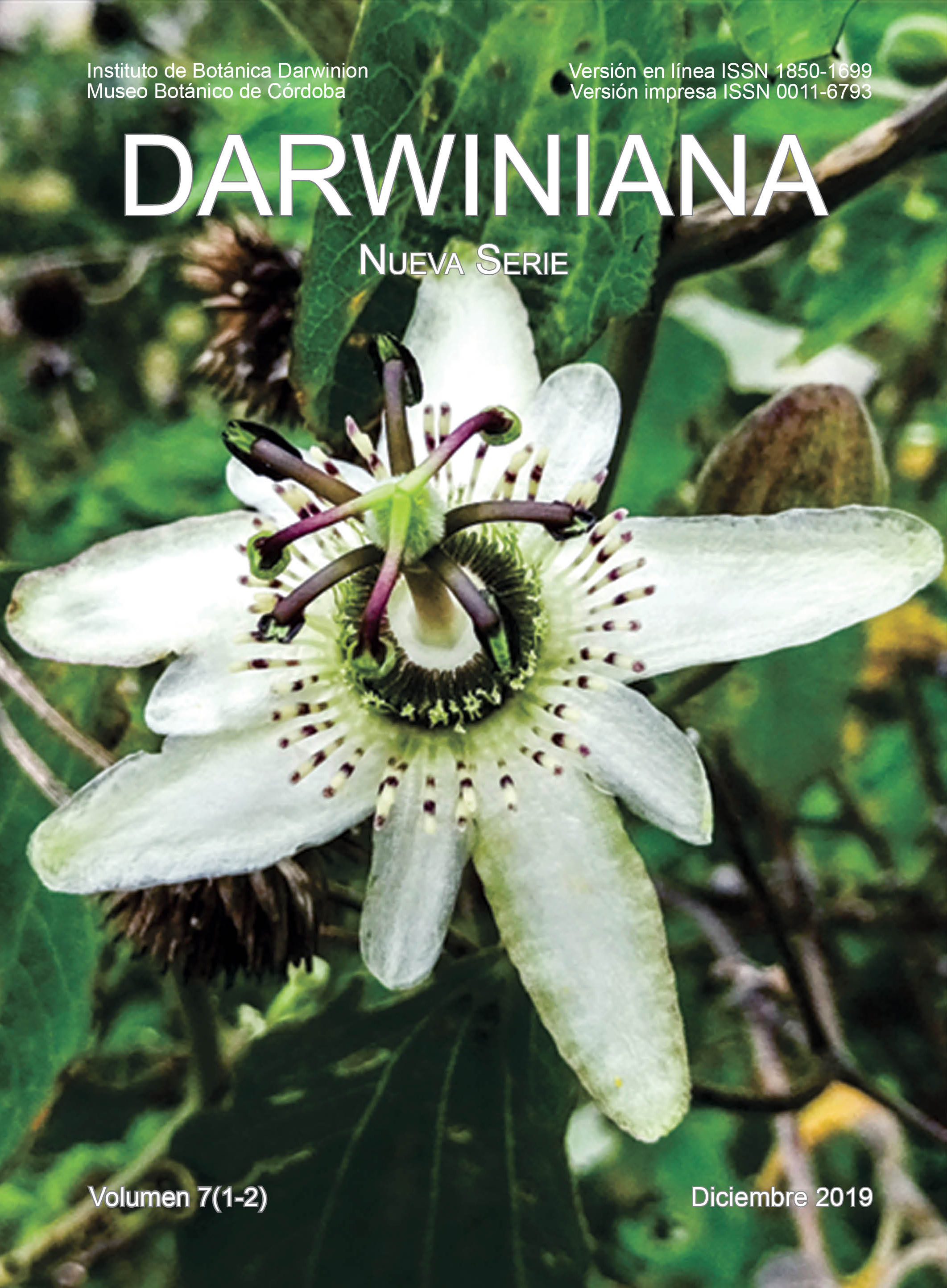Evidencias arqueobotánicas tempranas en el Oasis de Calama, el cementerio Topater 1 (Formativo medio, 500 a. C. - 100 d. C., Desierto de Atacama, norte de Chile)
DOI:
https://doi.org/10.14522/darwiniana.2019.71.824Palabras clave:
Andes Centro-Sur, Desierto de Atacama, evidencias arqueobotánicas, Formativo, idiosincrasias, sociedades agro-silvopastorilesResumen
El manejo de camélidos domésticos, e ingreso y cultivo de plantas son unos de los rasgos distintivos del período Formativo en el desierto de Atacama (ca. 3000-1450 A. P.). El incremento y regularidad de alianzas de intercambio estabilizan una nueva forma de vida en donde la relación con el territorio adquiere nuevas dimensiones, a la vez que se amplifica o al menos se hace más visible la interacción de las sociedades con el mundo vegetal. En este artículo describimos el registro arqueobotánico del cementerio Topater 1 del oasis de Calama (río Loa), perteneciente al Formativo medio y datado por radiocarbono hacia el 400 y 200 a. C. La excelente preservación y diversidad de recursos vegetales ofrendados aporta al conocimiento del repertorio arqueobotánico en los Andes Centro-Sur y a una mejor comprensión de las idiosincrasias existentes durante este período regional. Se vislumbra la emergencia de las primeras sociedades agro-silvopastoriles del desierto de Atacama.
Descargas
Publicado
Cómo citar
Número
Sección
Licencia

A partir de 2012, esta obra está licenciada bajo una Licencia Creative Commons Atribución-NoComercial 2.5 Argentina .
Cualquier obra derivada deberá estar previamente autorizada con nota escrita de los editores.







